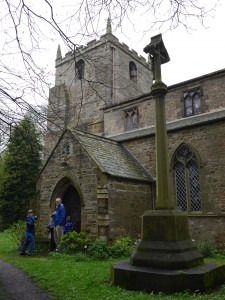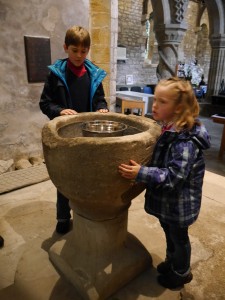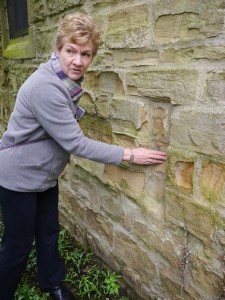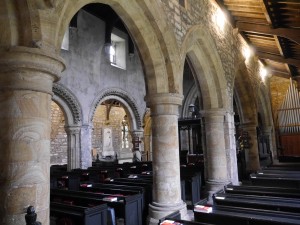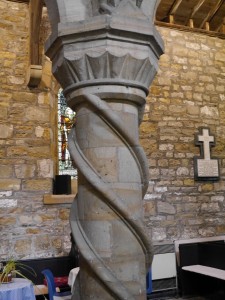It was a day of touring the Durham area with our new friend Penny 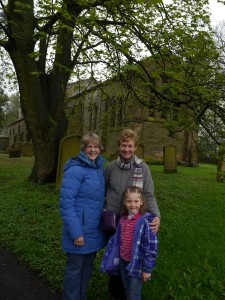 Martin, a good friend of Eldon and Marcia Olson from their Durham days. Penny, a retired Anglican rector, took us to visit a former parish in Pittington, a few miles from Durham. The roots of St. Lawrence Church go back to the fourth century, and portions of the current structure date to the early Norman period (10th century). Many additions and alterations have taken place through the centuries, and it’s a constant struggle to take care of the aging structure.
Martin, a good friend of Eldon and Marcia Olson from their Durham days. Penny, a retired Anglican rector, took us to visit a former parish in Pittington, a few miles from Durham. The roots of St. Lawrence Church go back to the fourth century, and portions of the current structure date to the early Norman period (10th century). Many additions and alterations have taken place through the centuries, and it’s a constant struggle to take care of the aging structure.
The Norman font was of particular interest to me. It was sold in 1805 to a farmer in Belmont and used as a watering trough for cattle for almost 90 years. During that time, the church used a marble font from Durham Cathedral. When the original was rediscovered and reclaimed, the marble font was returned to the Cathedral. If you look closely, you can see how one side of the font has been worn down over the course of many decades from the constant motion of cows stretching their necks to get to the water in the font!
The story of Christianity includes so many examples of words/places/feast days, and other elements, appropriated from some other ancient use and given new purpose and infused with new meaning. Along the winding path, some things, like this font, return to their source purpose, albeit, with a new layer of peculiar history to add to the story! Would that we’d all be as eager to quench our thirst at the Source of baptismal water as those bovine beauties!

